To celebrate the release of Star Trek: Into Darkness this month, we’ll be running through the first season of the classic Star Trek all this month. Check back daily to get ready to boldly go. It’s only logical.
We’ll be supplementing our coverage of the episodes with some additional materials – mainly novels and comics and films. This is one such entry.
Where were the Klingons? That seems to be one of the most frequently asked questions when a modern writer re-visits the early part of the first season of Star Trek. It makes sense. The Klingons are the franchise’s flagship aliens, and their long-term relations with the Federation mark one of the show’s earliest examples of continuity. The Organian Peace Treaty from Errand of Mercy is mentioned once or twice, but it informs a lot of the appearances of the Klingons in the classic Star Trek, as the warriors are prevented from engaging in direct warfare with the Federation.
However, when first introduced in Errand of Mercy, towards the end of the first season, the Klingons have just declared war on the Federation. However, it seems like this has been expected for a long time. Kirk speaks of the Klingons like old enemies. Kor knows that captain of the Enterprise by name. There’s a sense of a pre-established history, which makes their appearance towards the tale-end of the season all the more perplexing. Apparently they have been there all along, even if we haven’t seen them before.
John Byrne’s Alien Spotlight issue might have been themed around the Romulans, and the collected edition might be Romulans: Pawns of War, but it seems more devoted to exploring what exactly the Klingons were up to behind the scenes between their appearances on Star Trek.
First, a note on Byrne’s art. Byrne is one of the greatest comic book artists of his generation. However, he argues that he isn’t well-suited to likenesses. I would generally concede that (with the appearances of familiar characters in Crew being passable rather than exceptional). However, his work on recognisable Star Trek characters here is quite remarkable. He draws Koloth as if the Klingon were still being played by William Campbell from 1967. When Kor grins, he looks just like John Colicos.
Byrne might not offer the best depiction of Mark Lenard ever to appear on the comic book page, and his version of Majel Barrett Roddenberry is recognisable rather than identical, but his work with the Klingon characters here is absolutely stunning. It also gives Byrne a chance to show off his familiarity with Star Trek lore, drawing in two of the show’s most memorable Klingons to show what they were up to between sparring matches with Kirk.
And Byrne hits on something that should be quite obvious to most modern viewers, an irony which is striking on re-watching those classic Star Trek episodes. The Star Trek spin-offs generally characterised the Klingons as a race obsessed with duty and honour. Sure, Ronald D. Moore had great fun subverting that from time to time, but “honour” was their mantra. In contrast, from Star Trek: The Next Generation onwards, the Romulans were defined as manipulative cowards. The irony, of course, is that their roles in the original Star Trek were somewhat reversed.
The Romulans were obsessed with duty above all, serving as very thinly-disguised space!Romans. The anonymous Romulan commander from Balance of Terror comes close to being the most noble foe that Kirk ever faced. Similarly, we’re meant to feel a hint of pity from the other anonymous Romulan who is tricked by Kirk and Spock’s subterfuge in The Enterprise Incident. The Romulans are warriors, but they are honourable. It just seems a bit ironic, then, that the Romulans should be the Star Trek race to develop the cloaking device, a weapon which allows them to strike their enemies hidden from sight.
In contrast, the Klingons from the original Star Trek were generally scheming rascals. In Errand of Mercy, Kor lamented the fact that he wouldn’t meet Kirk in battle, and that he was stuck governing an occupied planet. However, he was perfectly willing to slaughter civilians and engage in torture. Throughout the show’s second season, in stories like Friday’s Child, Private Little War and The Trouble With Tribbles, the Klingons were established as duplicitous, manipulative and underhanded. Indeed, the Empire wasn’t obsessed with honour so much as perpetrating a campaign of subversion against the Federation’s interest.
It was only with the introduction of Kang in The Day of the Dove that we truly got a sense of an honourable Klingon. In the long gap between The Turnabout Intruder and Encounter at Farpoint, John Ford’s The Final Reflection established that Klingons adhered to their own code of honour and value system. Then episodes of The Next Generation like Heart of Glory and Sins of the Father established honour as the Klingons’ defining character traits. That was the point at which characterisation shifted.
So it’s telling, then, that Kang is the only one of the “big three” Klingons from the original Star Trek not to feature in Byrne’s Pawns of War. In one sequence that rather efficiently establishes the Klingon character, they assure a Romulan colleague, “There is no such world as ‘cheat’, young Romulan. There is only to do whatever must be done to win!”
Byrne’s Pawns of War – comprised of an Alien Spotlight one-shot, two Hallow Crown issues and a three-part Schism miniseries – essentially charts out the relationship between the Klingon Empire and the Romulans over the course of the classic Star Trek, from Balance of Terror well past The Enterprise Incident. Byrne has gone on record about the fact that he’s not a fan of any Star Trek beyond the original television show, and so it feels about right that Pawns of War charts the secret shared history of the Klingons and Romulans only to that point.
So the Klingon and Romulan divide does not occur over the Khitomer Massacre, as The Next Generation would officially establish. The Klingon Empire is apparently controlled by an emperor, which makes sense – but is also in sharp contrast to the history of the Klingon Empire established in Rightful Heir. And yet, despite this, Byrne still makes sly references outside the classic Star Trek.
Bumpy foreheaded Klingons appear, apparently belonging to the ruling caste in Byrne’s interpretation of Klingon politics. They are drawn to resemble the more subtle ridges of The Motion Picture than the later Star Trek shows. Koloth is punished for his failure in The Trouble With Tribbles by being forced to hunt down the fluffy creatures. This is perhaps a shout-out to his appearance in Star Trek: The Animated Series‘ More Tribbles, More Troubles, but may also reference “the great Tribble hunt” alluded to in Trials and Tribble-ations.
Byrne also indulges his own Star Trek preferences here. When the final three-issue miniseries, Schism, draws in the Federation, Byrne uses Number One as the protagonist of his story. He puts her in command of a starship with the cloaking device stolen in The Enterprise Incident, giving her the rank of Commodore so as to slyly subvert that infamous line from The Turnabout Intruder. The joke, of course, being that there may not be any female captains, but there are female officers who outrank captains.
Byrne also relies heavily on the characterisation of the Romulans in those early Star Trek episodes. He takes the idea of space!Romans, and carries it to its logical conclusion. The young Praetor discussed in Balance of Terror is revealed to be dangerously insane and inconsistent, and a manner clearly designed to evoke Caligula. One observer comments, “He totters ever on the brink of complete madness. When he slips over the edge…”
Later on, we meet a Romulan “witch” who brews a particular poison in a manner that seems more like magic than chemistry. In another visual reference outside the classic Star Trek, the poison seems to work a lot like the weapons from the start of Star Trek: Nemesis, decimating the Romulan Senate. As the Praetor decomposes, it’s hard not to recall that striking opening to a very mediocre film.
If Pawns of War has a problem in terms of structure, it’s an over-reliance on continuity, which sounds funny when you’re talking about a story very clearly woven between existing episodes of the show. However, while those episodes provide a context that Byrne structures into his story, there is a sense that the universe is very small. Everybody knows everybody. The presence of Kor and Koloth, as much fun as they are, is an example of this, albeit a mild one.
The real problem is that the story is anchored in the family of a character who died at the end of Balance of Terror, with the son holding a grudge against James T. Kirk. However, since Kirk never appears, that grudge never pays off. At the climax of Schism, when the stakes seem to be getting very real, Byrne draws in the Organians from Errand of Mercy.
It’s not a bad idea per se. After all, they’ve been mentioned before within this story, and their presence makes sense, but it feels like a clumsy deus ex machina. At least in Errand of Mercy they were around for the story before intervening at the end. Gene L. Coon’s script hinted that there was more to them, so the final reveal didn’t come out of nowhere. Here, however, they simply show up and end the story. And that is apparently acceptable because they are established characters.
Still, Byrne seems to be having a great deal of fun fleshing out the culture of these three worlds. He even gets to do a nice little scene on board a Federation base along the Neutral Zone, hinting at what life must be like waiting for a war that you hope never arrives. Wiggins explains, “… and since these stations have been here more than one hundred years, they have become quite homey. Each rotation from Earth has brought a little something to improve the living conditions. And as long as the Romulans were behaving themselves, this was a relatively soft assignment.”
Byrne fumbles the ending a bit. He raises the stakes to the point where there is no satisfactory way to resolve all the dangling threads. He uses a toy from the Star Trek box to help wrap everything up, but it still feels like a bit of a cop-out. However, aside from that, it’s a fun attempt tie together a version of events that could have been occurring in the background of Star Trek, all the intergalactic politics and scheming that we could only infer from a casual line of dialogue here or a sly reference there.
It’s not Byrne’s best Star Trek work, which remains Crew, but it’s an entertaining piece of world-building offering a unique vision of a Star Trek back story. It’s well worth a look for anybody interested in the classic versions of Star Trek‘s two earliest iconic alien adversaries.
You might be interested in our other reviews from the first season of the classic Star Trek:
- The Cage
- Supplemental: Vulcan’s Glory by D.C. Fontana
- Supplemental: Early Voyages #1 – Flesh of my Flesh
- Supplemental: Crew by John Byrne
- Where No Man Has Gone Before
- The Corbomite Manoeuvre
- Mudd’s Women
- The Enemy Within
- The Man Trap
- The Naked Time
- Charlie X
- Balance of Terror
- Supplemental: My Enemy, My Ally by Diane Duane
- Supplemental: Romulans: Pawns of War by John Byrne
- What Are Little Girls Made Of?
- Supplemental: Errand of Vengeance: The Edge of the Sword by Kevin Ryan
- Dagger of the Mind
- Miri
- The Conscience of a King
- The Galileo Seven
- Court Martial
- The Menagerie, Part I
- Supplemental: Early Voyages #12-15 – Futures
- The Menagerie, Part II
- Supplemental: Burning Dreams by Margaret Wander Bonanno
- Shore Leave
- The Squire of Gothos
- Arena
- Supplemental: Requiem by Michael Jan Friedman & Kevin Ryan
- The Alternative Factor
- Tomorrow is Yesterday
- The Return of the Archon
- A Taste of Armageddon
- Space Seed
- This Side of Paradise
- The Devil in the Dark
- Errand of Mercy
- Supplemental: Spock Must Die! by James Blish
- Supplemental: The Final Reflection by John M. Ford
- The City on the Edge of Forever
- Supplemental: The City on the Edge of Forever by Harlan Ellison/Cordwainer Bird
- Supplemental: Crucible: McCoy – Provenance of Shadows by David R. George III
- Supplemental: Star Trek (Gold Key) #56 – No Time Like the Past
- Operation — Annihilate!
Filed under: Comics, The Original Series | Tagged: Enterprise Incident, Federation, idw, IDW Publishing, John Byrne, Klingon, pawns of war, Romulan, romulans: pawns of war, Romulus and Remus, science fiction, Ship, star trek (comics), Star Trek Into Darkness, Star Trek Online, star trek: the next generation, StarTrek, Tribble, Trouble With Tribbles |
















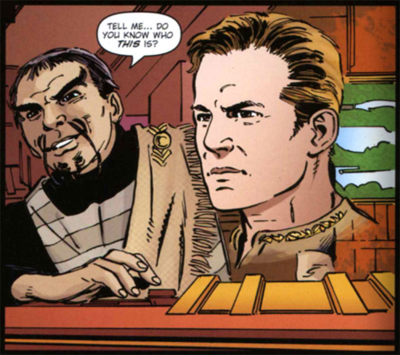
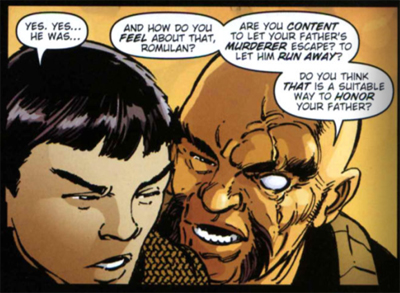




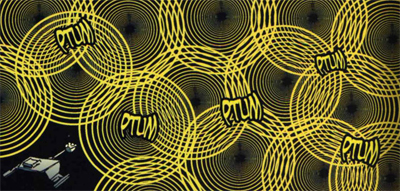
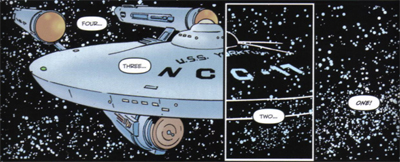
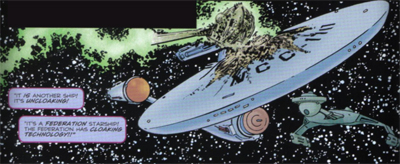





Sounds good. I loved Crew, so I’ll have to track down a copy of this series.
I think Crew was quite a bit stronger, but Romulans is still fun. They’re releasing a nice deluxe collection of Byrne’s Star Trek comics at the end of the month. I’ll be double-dipping on Crew and Romulans, but I don’t have “Frontier Medicine” or Assignment Earth yet, both of which I am keen to check out.
Ah – I shall wait, as they say, for the trade.
or, in this case, the deluxe edition!
I think, but I’m not 100% sure, that it is one of IDW’s lovely massive hardcovers, like the superb Dave Gibbons Doctor Who collection they put out a year or two ago. (A thing of beauty, that.) I’ll be disappointed if it’s not oversized, as Byrne remains a pretty great artist.
Reblogged this on queenofshebaformulary.